We put the Samsung Galaxy S22+ (Exynos) display through our rigorous DXOMARK Display test suite to measure its performance.
Overview
Key display specifications:
- 6.6inches AMOLED (90.0% screen-to-body ratio)
- Dimensions: 157.4 x 75.8 x 7.6 mm
- Resolution: 1080 x 2340 pixels, (~393 ppi density)
- Aspect ratio: 19.5:9
- Refresh rate: 120 Hz
Scoring
Sub-scores and attributes included in the calculations of the global score.
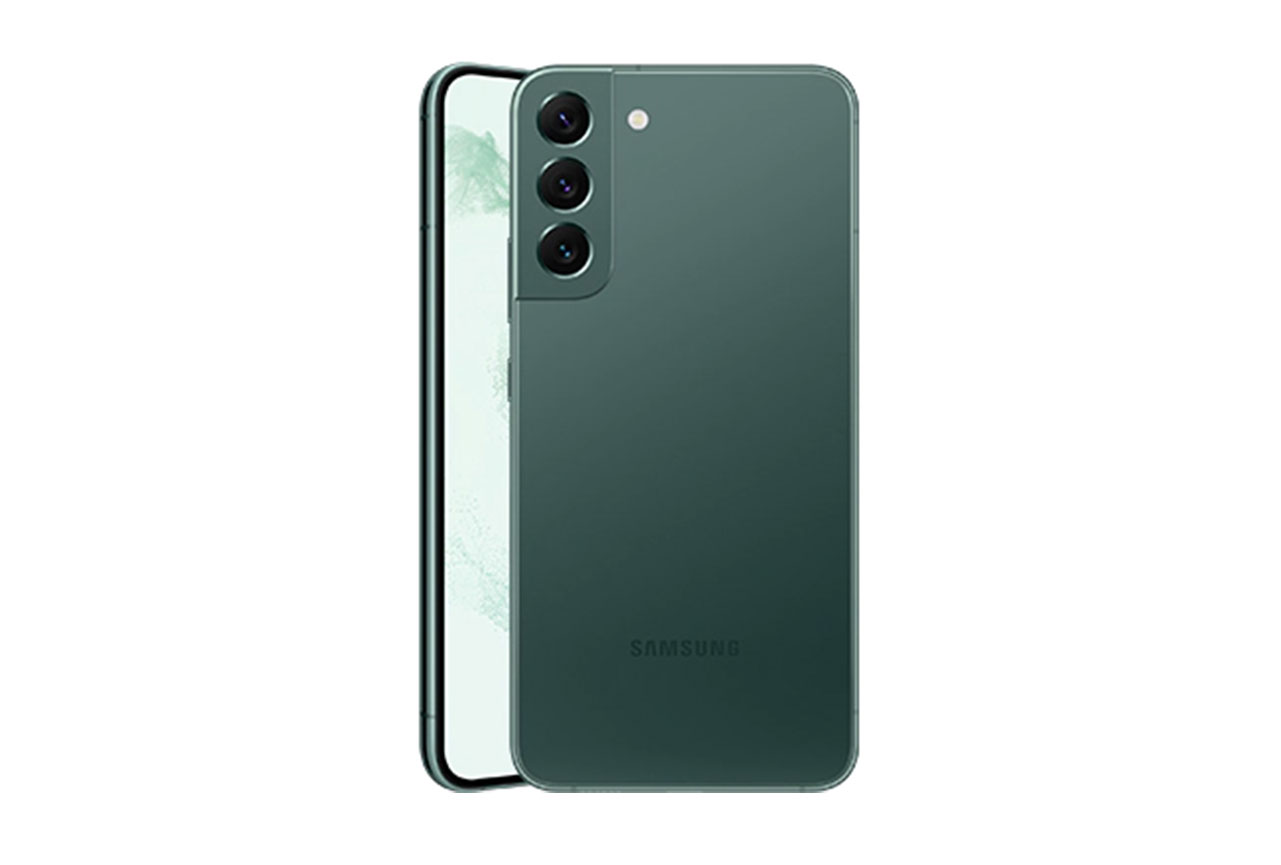 Samsung Galaxy S22+ (Exynos)
Samsung Galaxy S22+ (Exynos)


 80th
80th
 53rd
53rd
Pros
- High maximum brightness level under sunlight
- Adapted brightness and good tone curve on HDR10 videos
- Smooth interactions for web browsing or looking at pictures the gallery app
Cons
- Strong image alteration under sunlight
- Frame mismatches when gaming or watching videos
- Lack of smoothness on light transition
The Samsung Galaxy S22+ (Exynos) display’s performance proved to be just as good as the Ultra model, with both models attaining the same overall score.
It showed itself to be very versatile and well suited for most of the real-life situations used in the display tests. The movie-watching use case, in particular, stood out because of its well-managed brightness, contrast and dark tones.
Outdoors and in the sunlight, the brightness and readability performance of the S22+ (Exynos) was similar to the top-end S22 Ultra (Exynos).
When web browsing on the S22+ (Exynos), the display was also readable in indoor ambient lighting, and scrolling was smooth. But in our night reading use case, a low light condition, we found the brightness level to be a bit too high. In addition, the low flicker at 240 Hz could be a strain on some eyes.
Under sunlight, the display’s high brightness mode had a strange effect on some photos: While the screen was quite readable, all content details were lost and the photos’ color patterns appeared flat.
In ambient light conditions, viewing photos was affected by a yellow cast, but this did not affect skin tones. The slight yellow cast was also noticeable during movie watching.
The S22+’s versatility does not extend to gaming because the display sometimes suffers from aliasing and frame stutters.
Still, despite minor differences in readability, color, and video, the S22+ (Exynos) screen provided a well-rounded performance for a device that matched the series’ flagship ultra device – just in a slightly smaller package.
Test summary
About DXOMARK Display tests: For scoring and analysis in our smartphone and other display reviews, DXOMARK engineers perform a variety of objective and perceptual tests under controlled lab and real-life conditions. Note that we evaluate display attributes using only the device’s built-in display hardware and its still image (gallery) and video apps at their default settings. (For in-depth information about how we evaluate smartphone and other displays, check out our articles, “How DXOMARK tests display quality” and “A closer look at DXOMARK Display testing.”
The following section gathers key elements of our exhaustive tests and analyses performed in DXOMARK laboratories. Detailed performance evaluations under the form of reports are available upon request. Do not hesitate to contact us.
Readability
Samsung Galaxy S22+ (Exynos)
164
Readability evaluates how easily and comfortably users can read the display under different real-life conditions on still content (photos & web). DXOMARK uses its Display Bench to recreate ambient light conditions ranging from total darkness to bright sunlight. In addition to laboratory tests, perceptual analysis is also made in real-life environments.

Color
Samsung Galaxy S22+ (Exynos)
165
The color attribute evaluates the capacity of the device to accurately reproduce colors. The measurements taken are for fidelity, white point color, and gamut coverage. We perform color evaluations for different lighting conditions to see how well the device can manage color in the surrounding environment. Colors are measured using a spectrophotometer in a controlled lighting environment. Perceptual analysis of color rendering is against the reference pattern displayed on a calibrated professional monitor.
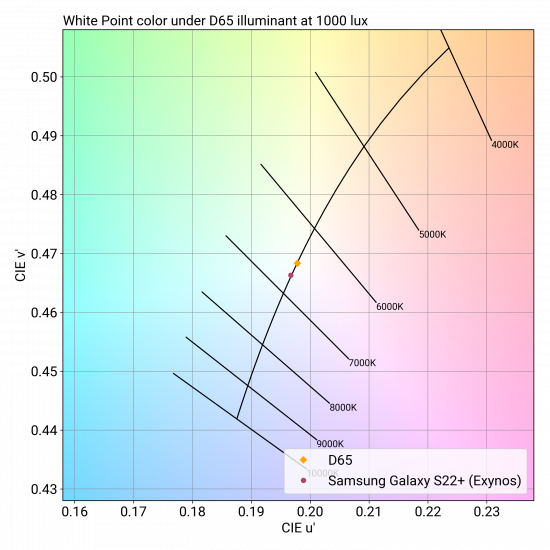
Each arrow represents the color difference between a target color pattern (base of the arrow) and its actual measurement (tip of the arrow). The longer the arrow, the greater the color difference is visible. If the arrow stays within the circle, the color difference will only be visible to trained eyes.


This graph shows the color shift when the screen is at an angle. Each dot represents a measurement at a particular angle. Dots inside the inner circle exhibit no color shift in angle; those between the inner and outer circle have shifts that only trained experts will see; but those falling outside the outer circle are noticeable.
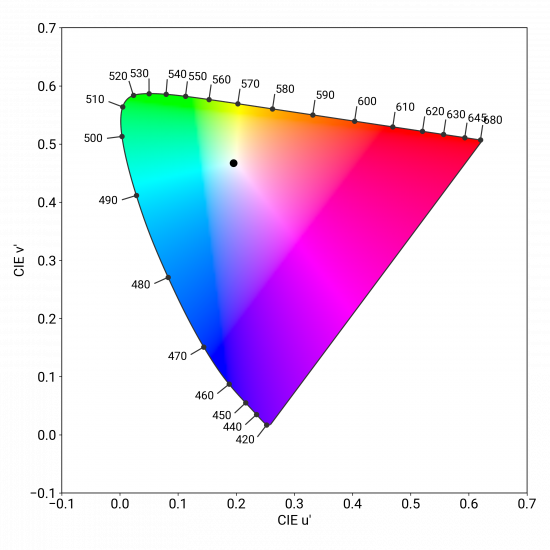
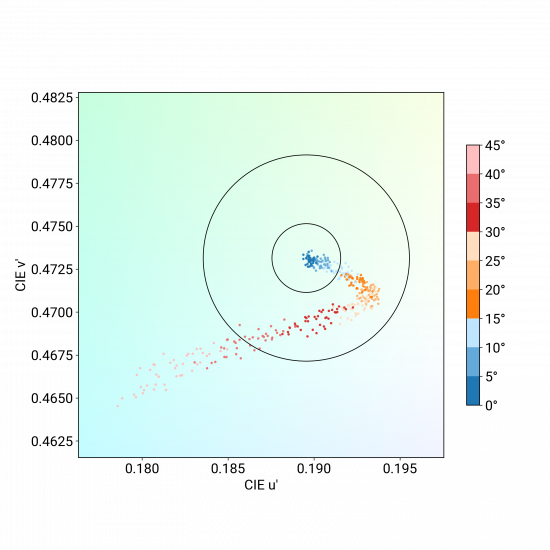
Video
Samsung Galaxy S22+ (Exynos)
167
Our video attribute evaluates the Standard Dynamic Range (SDR) and High Dynamic Range (HDR10) video handling of each device in indoor and low light conditions. We measure tone mapping, color gamut, brightness and contrast of the display. We perform perceptual analysis against our professional reference monitor (Sony BVM-HX310) to ensure that the rendering respects the artistic intent.
The primary colors are measured both in HDR10 and SDR. The extracted color gamut shows the extent of the color area that the device can render. To respect the artistic intent, the measured gamut should match the mastering color space of each video.
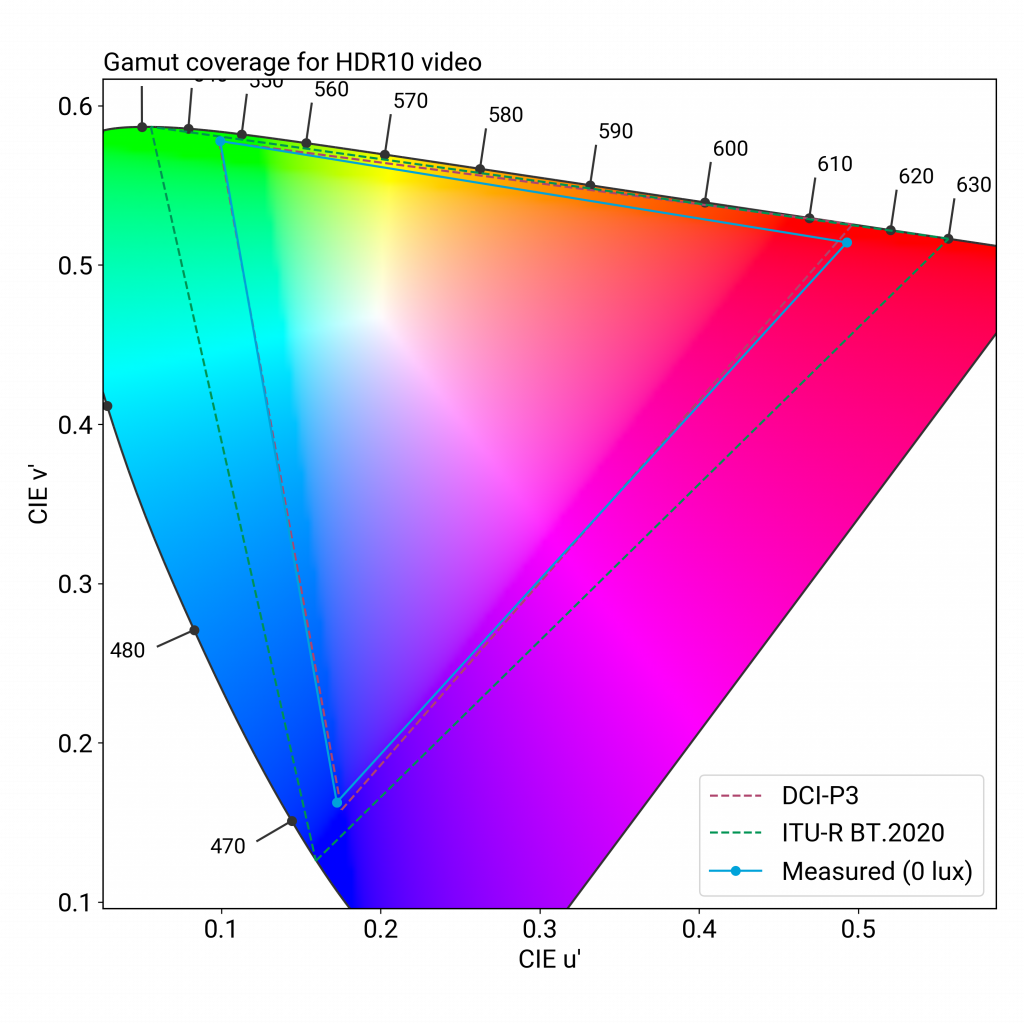
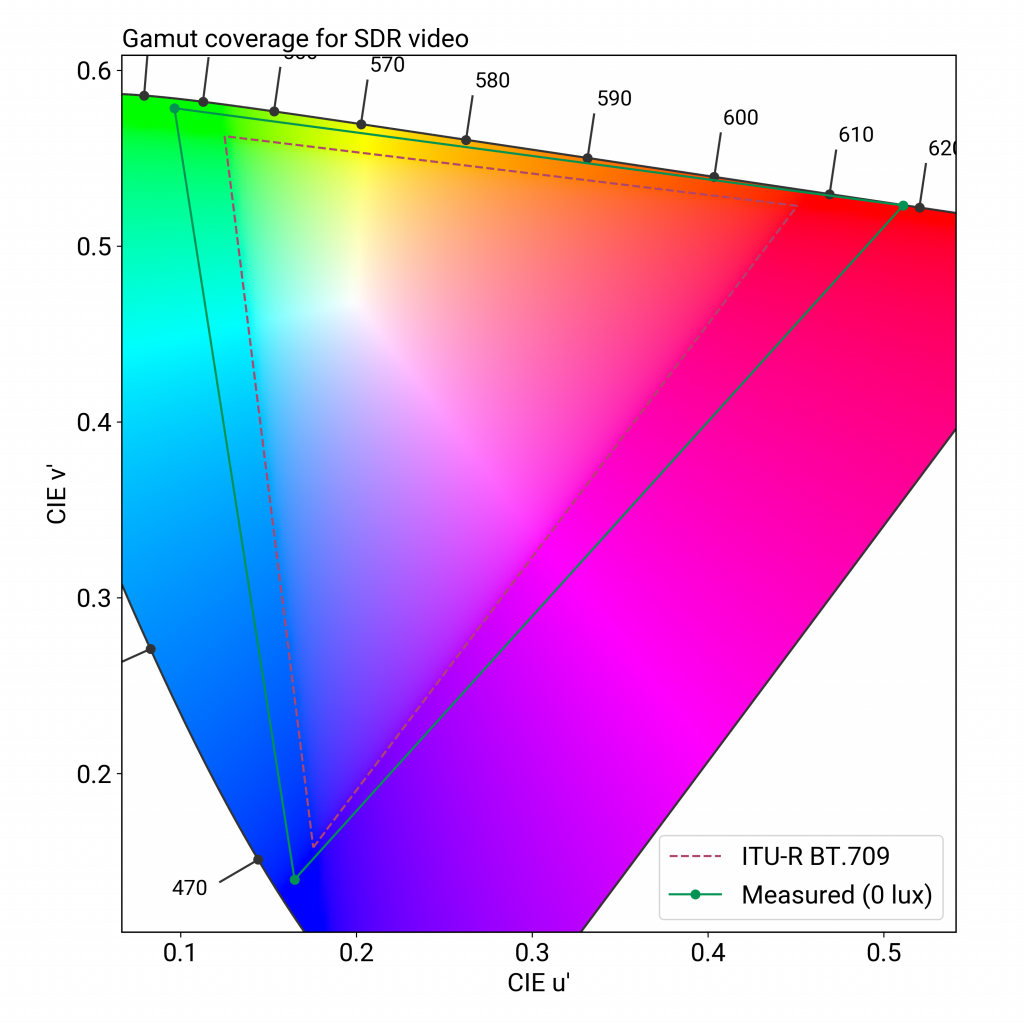

Motion
Samsung Galaxy S22+ (Exynos)
The motion attribute evaluates the handling of dynamic contents. Frame drops, motion blur, and playback artifacts are scrutinized using games and videos.
Video frame drops
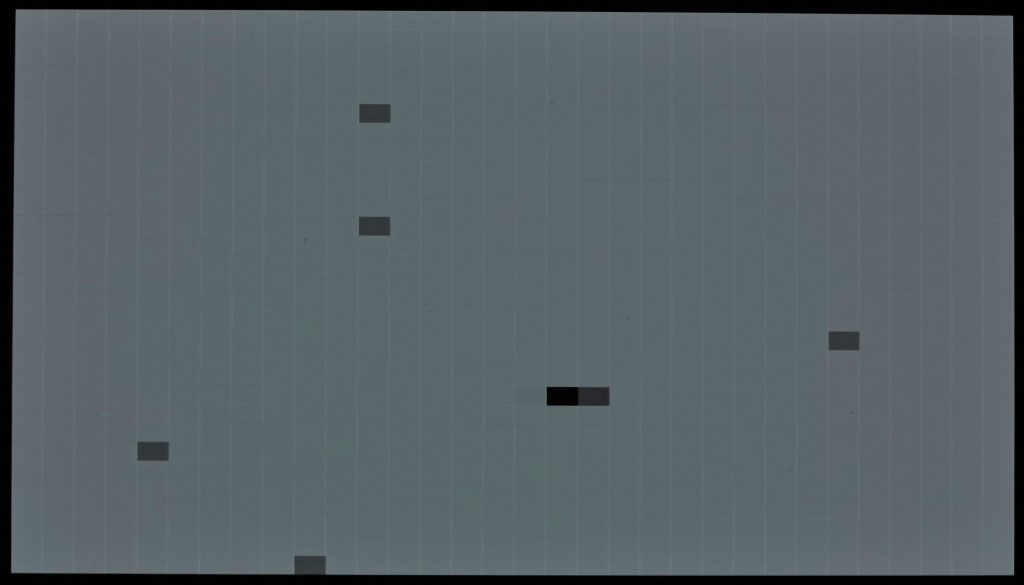
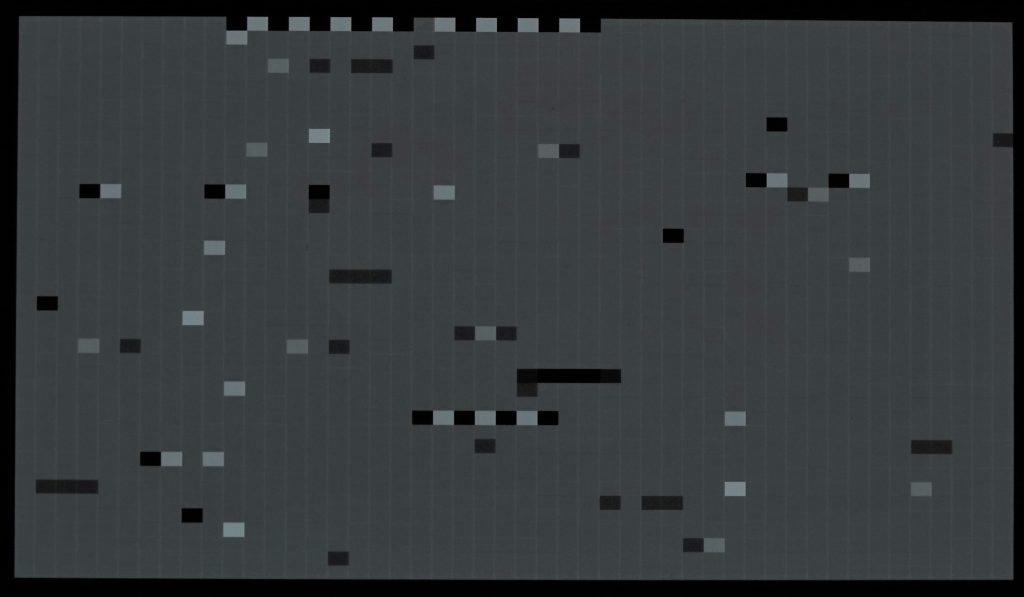
This long exposure photo presents the number of frame irregularities in a 30-second video. A good performance shows a regular pattern (either a flat gray image or a pull-down pattern).
Touch
Samsung Galaxy S22+ (Exynos)
164
To evaluate touch, DXOMARK uses a touch robot and a high-speed camera to play and record a set of scenarios for smoothness, accuracy and response-time evaluation.
This response time test evaluates precisely the time elapsed between the robot touching the screen and the displayed action. This test is applied to activities that require a high reactivity, such as gaming.
Artifacts
Samsung Galaxy S22+ (Exynos)
Evaluating artifacts means checking for the performance, image rendering and motion flaws that can affect the end-user experience. DXOMARK measures precisely the device’s reflectance and the presence of flicker as well as evaluates the residual aliasing when playing videogames, among others.
Measurements above that show the reflection of the device within the visible spectrum range (400 nm to 700 nm). It includes both diffuse and specular reflection


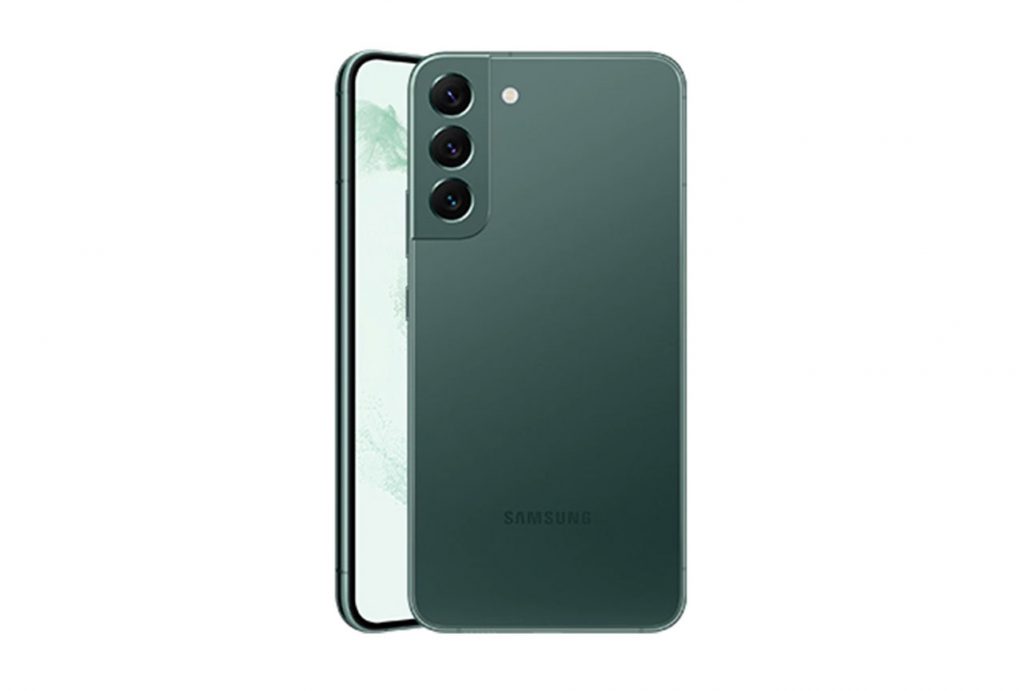
DXOMARK encourages its readers to share comments on the articles. To read or post comments, Disqus cookies are required. Change your Cookies Preferences and read more about our Comment Policy.